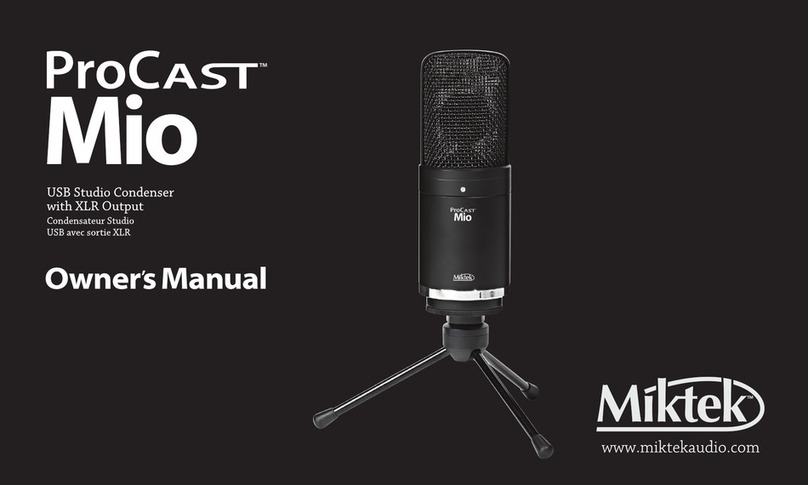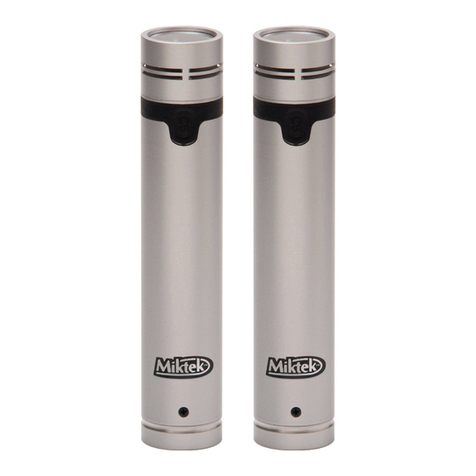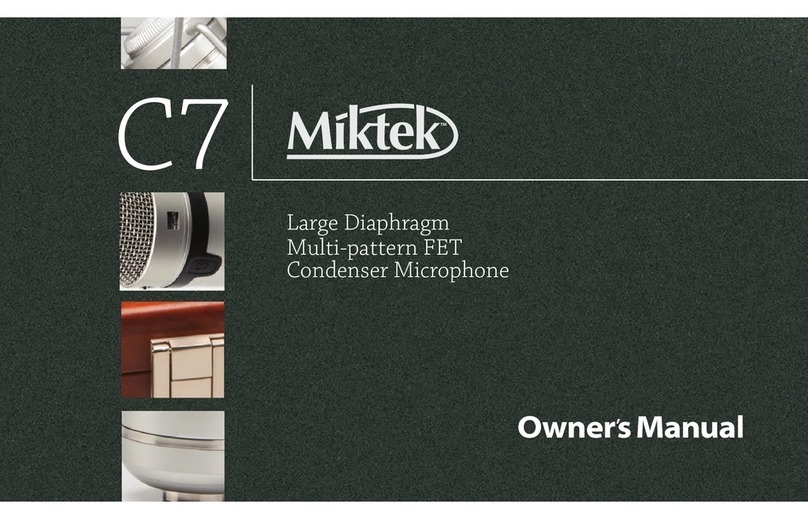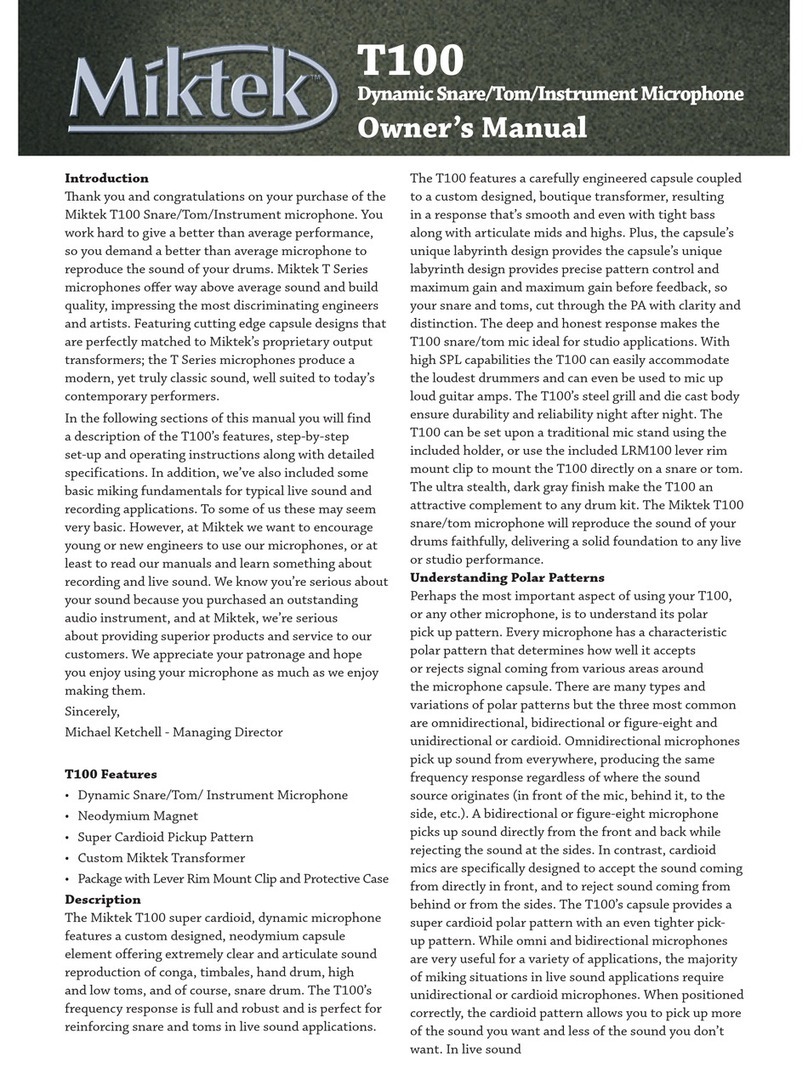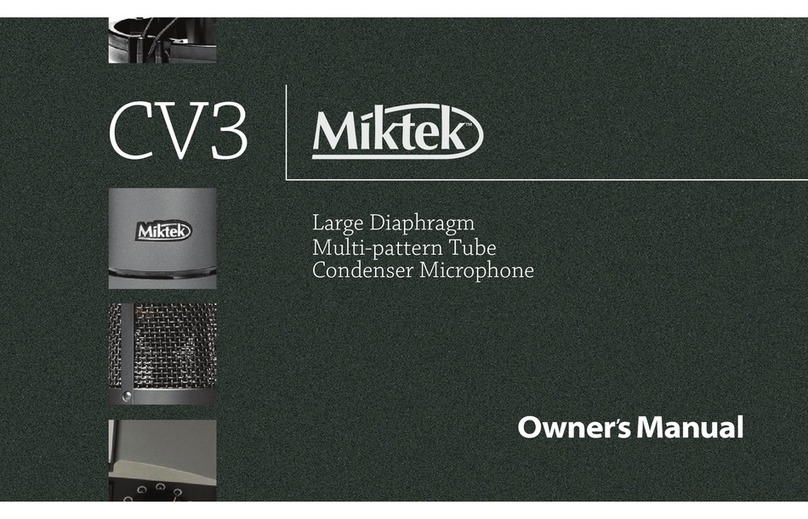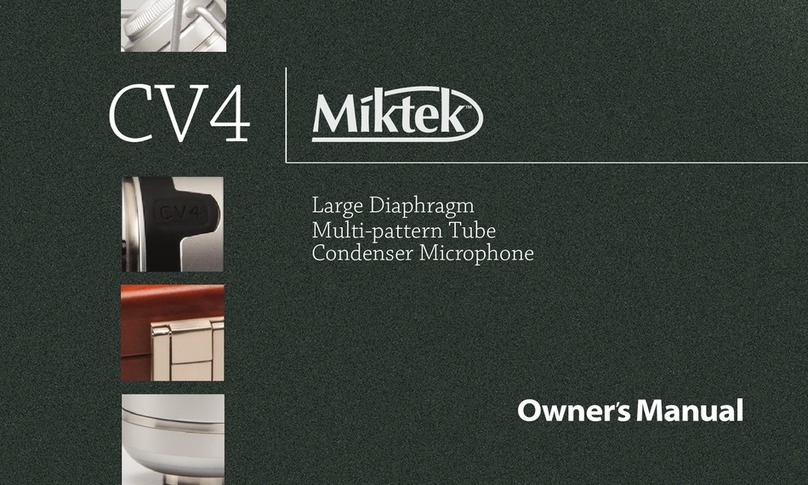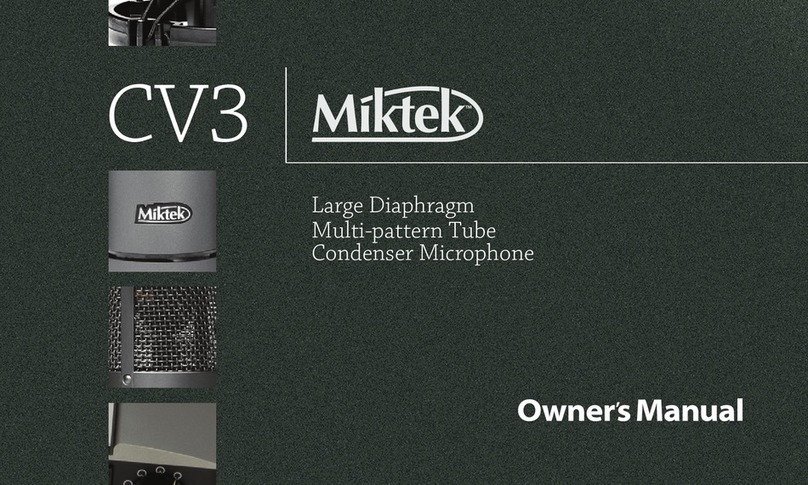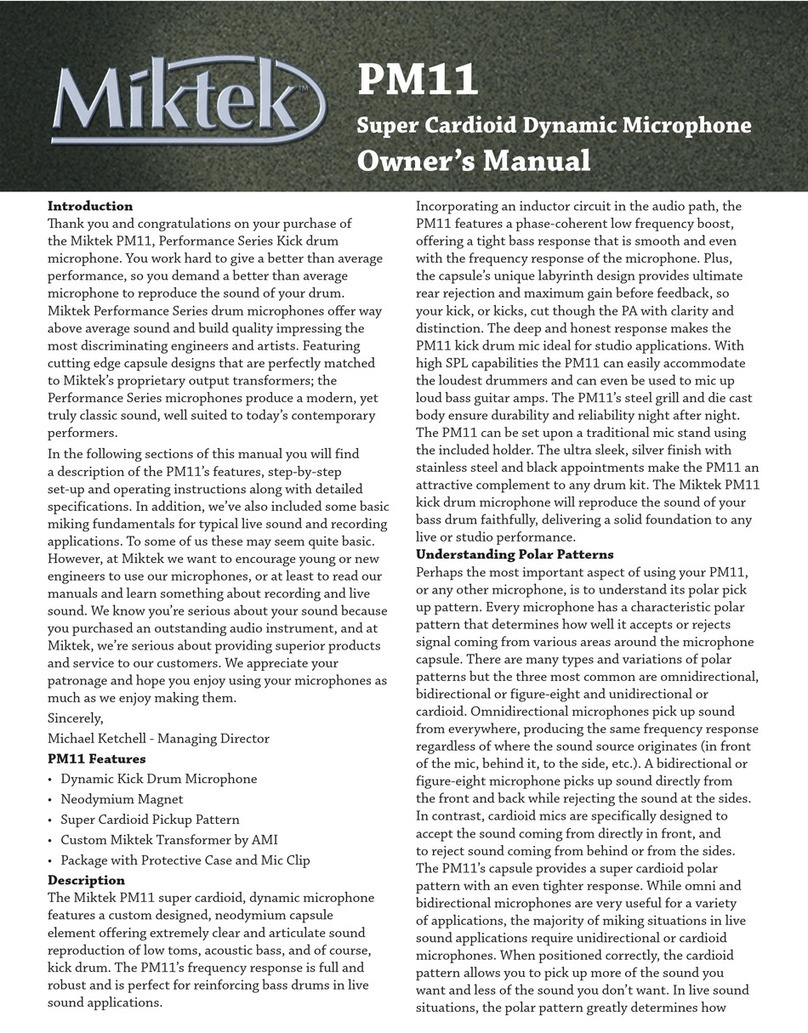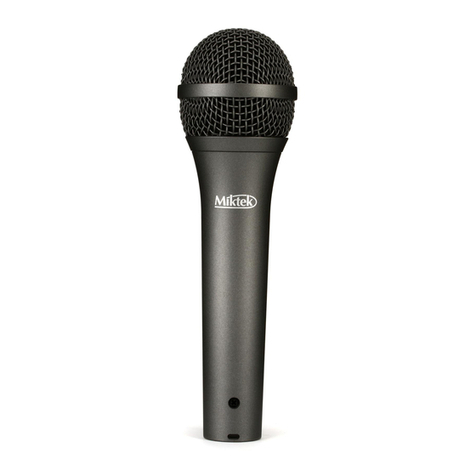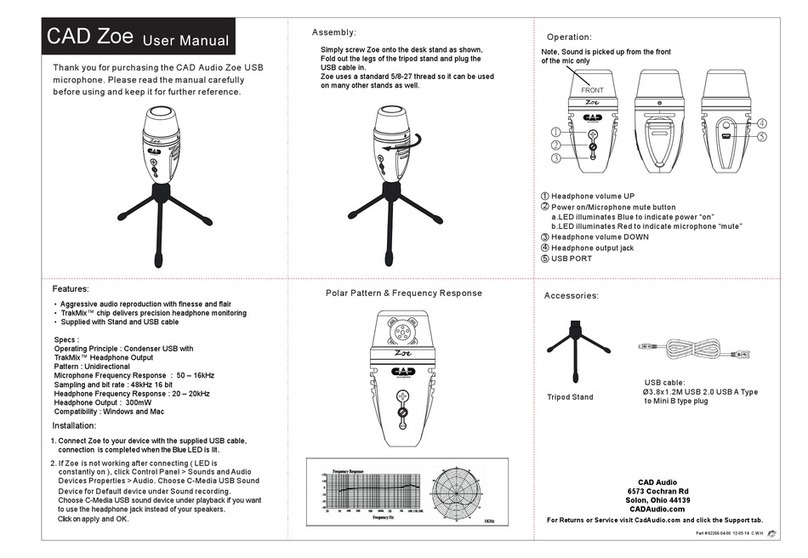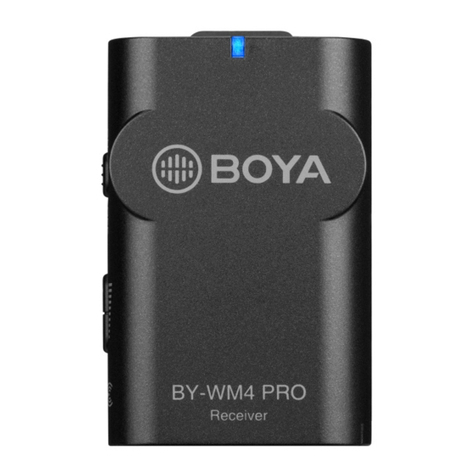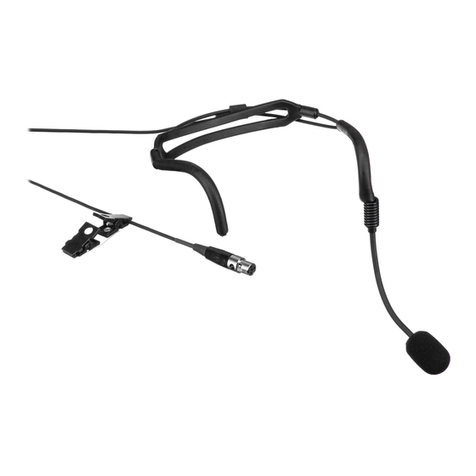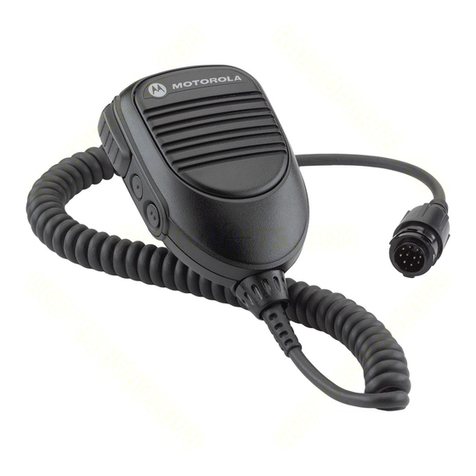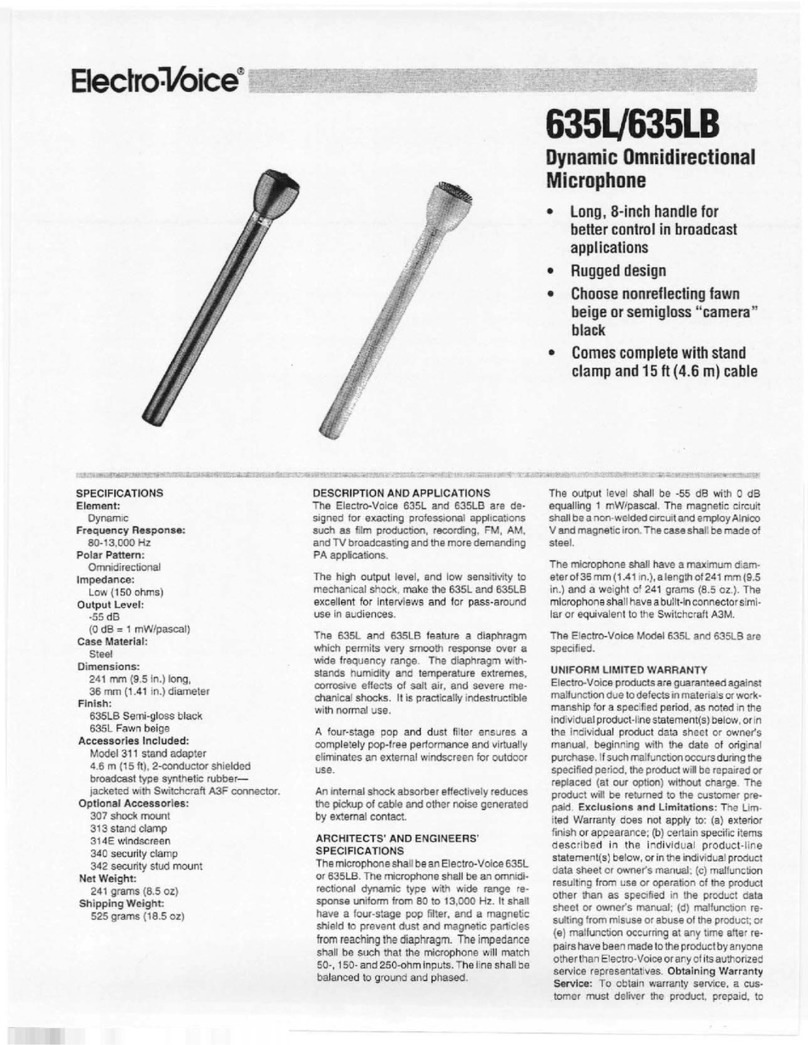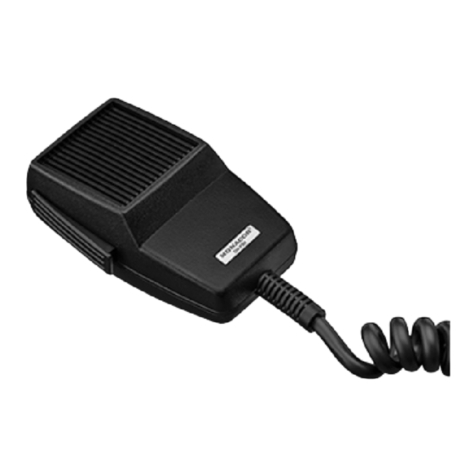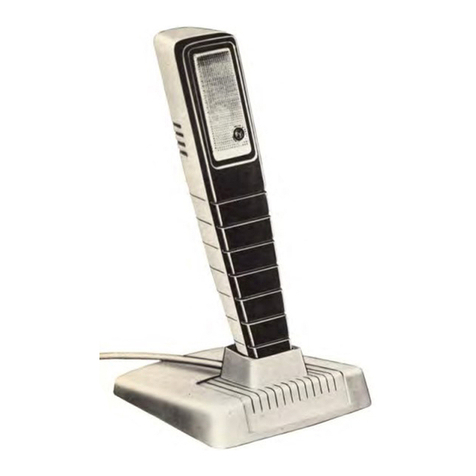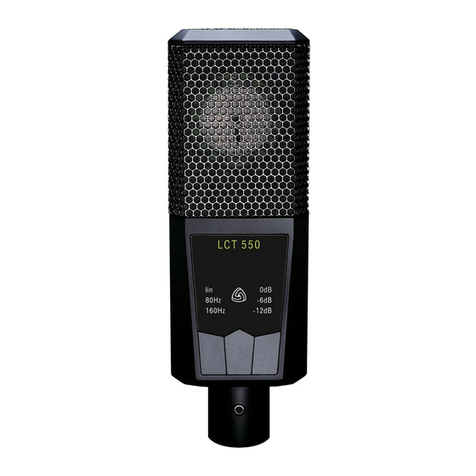Miktek PM9 User manual

Introduction
ank you and congratulations on your purchase of
the Miktek PM9 , Performance Series handheld stage
microphone. You work hard to give a better than average
performance, so you demand a better than average
microphone to reproduce the sound of your voice. Miktek
Performance Series handheld microphones offer way
above average sound and build quality impressing the
most discriminating engineers and artists. Featuring
cutting edge capsule designs that are perfectly matched
to Miktek’s proprietary output transformers; the
Performance Series Microphones produce a modern, yet
truly classic sound, well suited to today’s contemporary
performers.
In the following sections of this manual you will find
a description of the PM9’s features, step-by-step set-
up and operating instructions along with detailed
specifications. In addition, we’ve also included some basic
miking fundamentals for typical live sound and recording
applications. To some of us these may seem quite basic.
However, at Miktek we want to encourage young or new
engineers to use our microphones, or at least to read our
manuals and learn something about recording and live
sound. We know you’re serous about your sound because
you purchased an outstanding audio instrument, and at
Miktek, we’re serous about providing superior products
and service to our customers. We appreciate your
patronage and hope you enjoying using your microphones
as much as we enjoy making them.
Sincerely,
Michael Ketchell - Managing Director
PM9 Features
• DynamicVocalMicrophone
• NeodymiumMagnet
• SuperCardioidPickupPattern
• CustomMiktekTransformerbyAMI
• PackagewithProtectiveCaseandMicClip
Description
e Miktek PM9 is a super cardioid, dynamic microphone
featuring a custom designed, neodymium capsule element
offering extremely clear and articulate vocal reproduction.
e PM9’s frequency response is full and sweet. Plus, the
capsule’s unique labyrinth design provides ultimate rear
PM9
Super Cardioid Dynamic Microphone
Owner’s Manual
rejection and maximum gain before feedback, so you can
hear more of yourself on stage. With high SPL capabilities
the PM9 can easily accommodate the loudest singers and
can even be used to mic up loud guitar amps, brass and
drums. e PM9’s multistage windscreen helps ensure
a minimum amount of p-popping and the steel grill and
die cast body ensure durability and reliability night after
night. e ultra sleek, black finish with stainless steel
appointments make the PM9 an attractive complement to
any stage setting.
Understanding Polar Patterns
Perhaps the most important aspect of using your PM9,
or any other microphone, is to understand its polar pick
up pattern. Every microphone has a characteristic polar
pattern that determines how well it accepts or rejects
signal coming from various areas around the microphone
capsule. There are many types and variations of polar
patterns but the three most common are omnidirectional,
bidirectional or figure-eight and unidirectional or
cardioid. Omnidirectional microphones pick up sound
from everywhere, producing the same frequency response
regardless of where the sound source originates (in front
ofthemic,behindit,totheside,etc.).Abidirectionalor
figure-eight microphone picks up sound directly from
the front and back while rejecting the sound at the sides.
In contrast, cardioid mics are specifically designed to
accept the sound coming from directly in front, and
to reject sound coming from behind or from the sides.
The PM9’s capsule provides a super cardioid polar
pattern with an even tighter response. While Omni and
Bidirectional microphones are very useful for a variety
of applications, the majority of miking situations in live
sound applications require unidirectional or cardioid
microphones. When positioned correctly, the cardioid
pattern allows you to pick up more of the sound you
want and less of the sound you don’t want. In live sound
situations, the polar pattern greatly determines how
prone a particular microphone is to inducing feedback.
Feedback is that nasty howling sound that occurs when
a mic is placed too close to a loudspeaker—the signal
from the loudspeaker is fed into the mic, then into the
loudspeaker, then into the mic, over and over. The super
cardioid pick-up pattern allows for better separation of
instruments on stage and more control over feedback in
live sound reinforcement.

PM9 Specifications
Type ................. Dynamic
Polar Pattern: ......... SuperCardioid
Frequency Response: ... 50Hz - 19KHz
Impedance: ........... 300 Ohms
Sensitivity . . . . . . . . . . . . -57dBV/Pa
Length: .............. 7.1 inches
Width: ............... 2.0 inches
Depth: ............... 2.0 inches
NetWeight: ........... 0.65 pounds
Specifications subject to change.
Stand Mounting the PM9
The PM9 can be mounted to any standard microphone
stand using the included mic stand holder. If you are
usingaUSstandard5/8-inchmicstand,removetheEuro
adapter by unscrewing it from the mic holder. Slide the
microphone into the holder from the rear to the front
with a downward motion until it snaps into place.
Microphone Placement
To help maximize the quality of your performance, you
must pay careful attention to the placement of your PM9,
and specifically, how it is positioned for the instrument
orvocalistthatyou’remiking.Asyoubecomemore
experienced in miking techniques, you’ll quickly realize
the microphone placement is critical to getting the
sound you want while maximizing gain before feedback.
When placing the mic around any instrument or sound
source, take notice of the postion of the front of house
and monitor loudspeakers. In general, it’s good practice
to set the microphone behind the main or front of house
PAspeakerstoavoidfeedbackfromthosespeakers.
Also,positionthemicrophoneinfrontofamonitor
loudspeaker within a 110 degree arch a shown in the
diagrambelow.Asyou’rechangingthemicrophone’s
position, be sure to check that the mic input is still set
to a good level without clipping, as described in the next
section.
Setting Up the Signal Level
In order to get a good signal, first be sure that the PM9 is
connected to a mixer or recorder input that is microphone
level. Most quality mixers, mic pre’s and recorders
providemicrophoneinputswithamictrim(“Trim”AKA
Mic Gain or Level) control. The purpose of the mic trim
control is to set a good signal level and minimize any
noiseassociatedwiththemicinputselectronics.Agood
micprewillalsohaveaCliporPeakLEDtoshowyou
when the input is at overload; the level which distortion
begins to occur. To set a good clean level, set the PM9 up
in front of the desired sound source and slowly turn up
themictrimuntilyouseetheClipLEDlightup.Then,
turn the trim control down until the LED does not light
any more. On most microphone inputs, the best setting
is when the trim control is turned up as high as possible
withoutlightingthePEAKLED.
The Proximity Effect
Allcardioidoruni-directionalmicrophonesexhibita
phenomenon known as “proximity effect”. The proximity
effect is the increase in low frequency response a
microphone exhibits as it is moved closer to the sound
source.Vocalisttendtolovethiseffectsincewhenthey
get really close to the mic they get the “FM radio”, big
basssound.Agoodvocalistwithgoodmictechniquewill
use the proximity effect to adjust their tonal response in
real time. The key to developing the best mic technique
is experimentation, along with awareness of the general
principle that, the closer your PM9 is to a signal source,
the greater the bass response. The proximity effect’s bass
lift is caused by the amount of pressure present at the
ports that are used to create the directional pattern. Since
omnidirectional microphones do not have ports, they do
not have proximity effect.
Front of House Speaker
Monitor Speaker
Front of House Speaker
1
1
0
º
Other Miktek Microphone manuals
Popular Microphone manuals by other brands
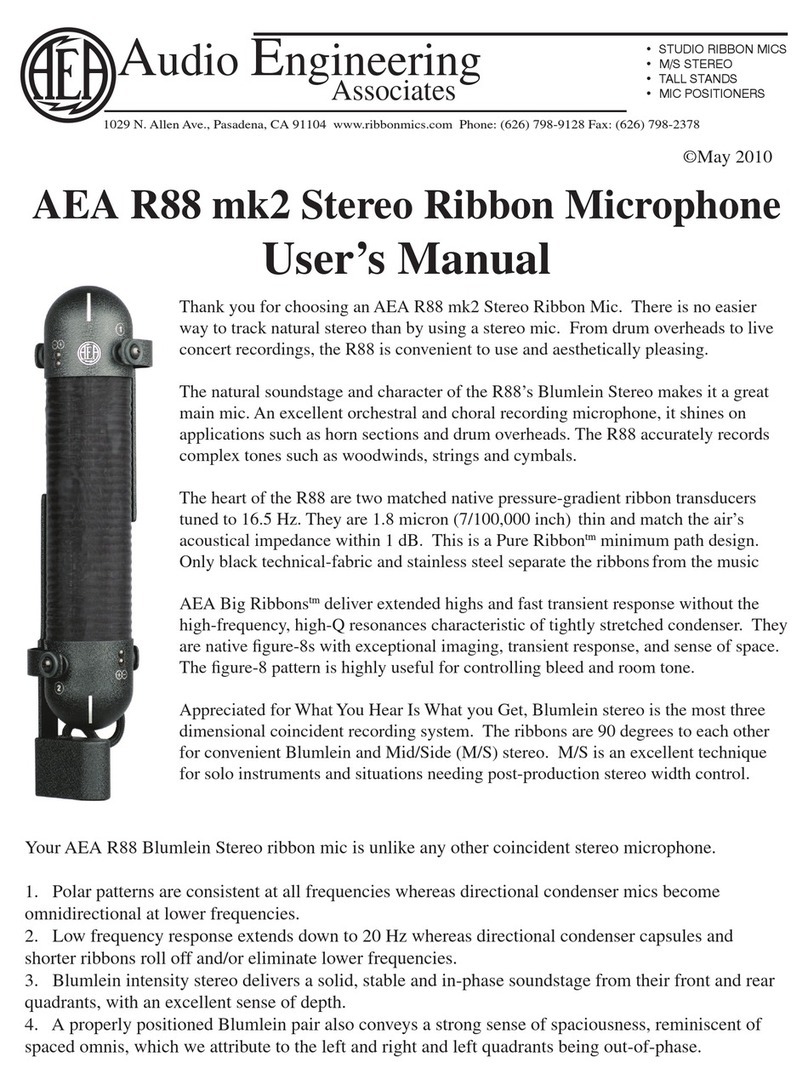
Audio Engineering Associates
Audio Engineering Associates AEA R88 user manual
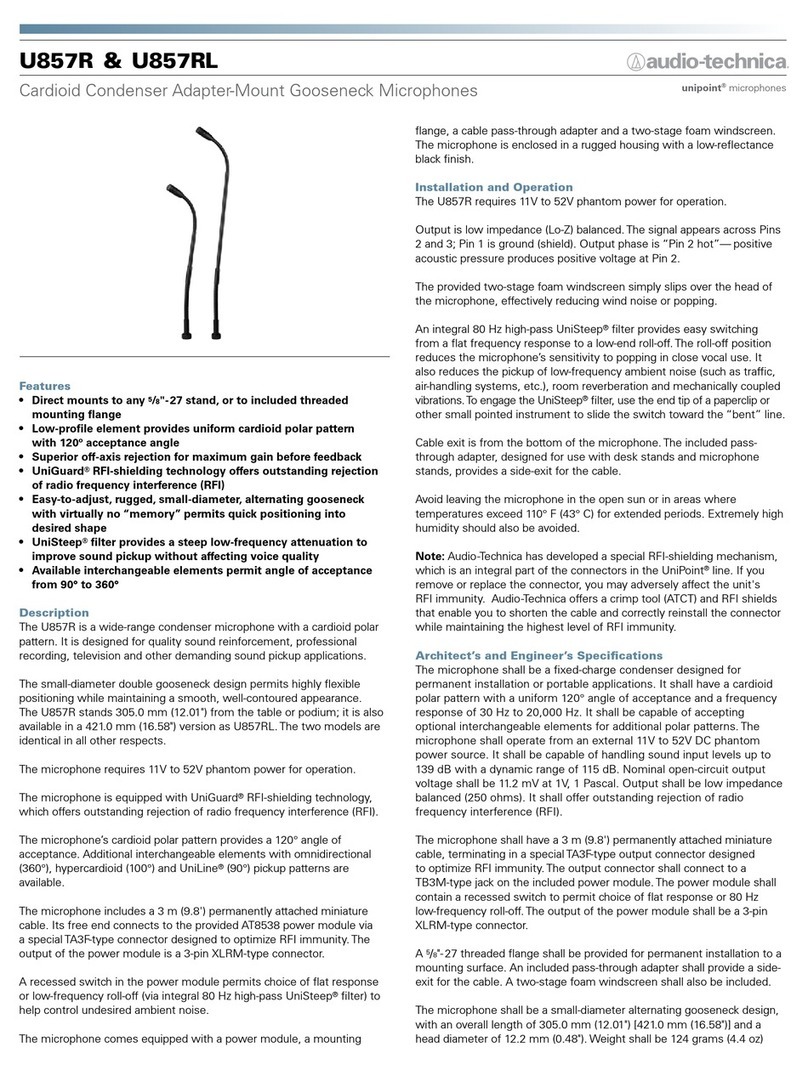
Audio Technica
Audio Technica U857R Installation and operation
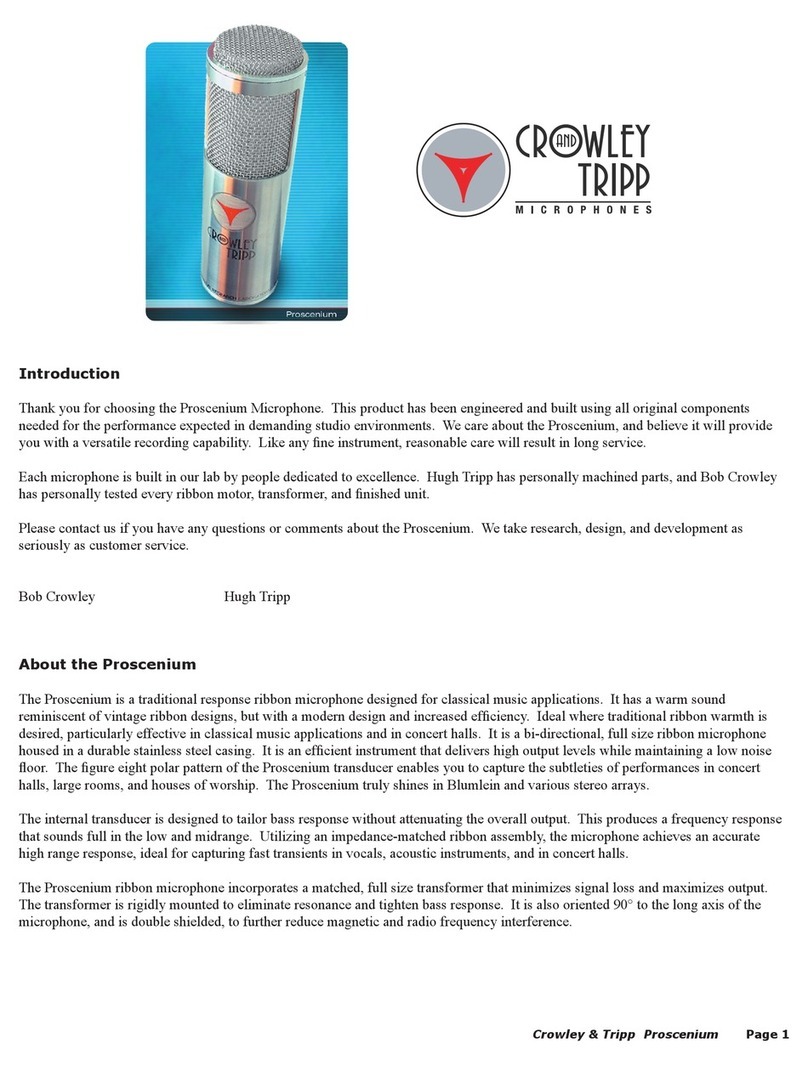
Crowley Tripp
Crowley Tripp Proscenium manual

Audio Technica
Audio Technica AT2020USB-XP user manual
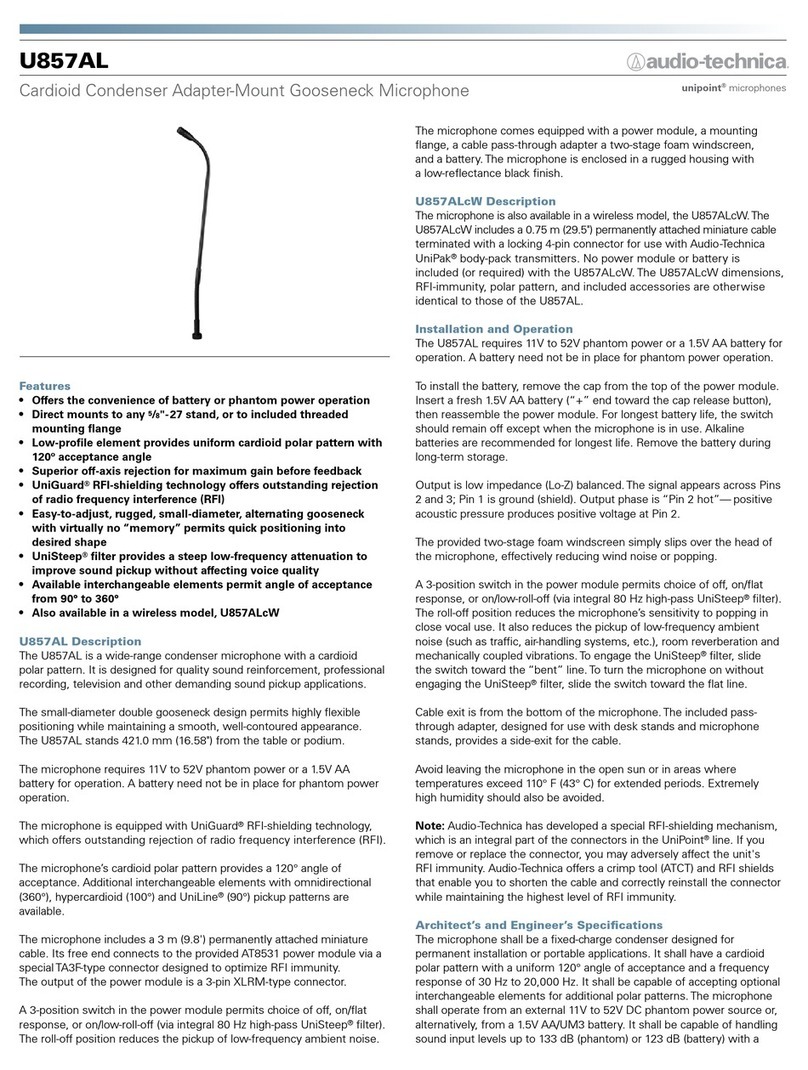
Audio Technica
Audio Technica U857AL manual
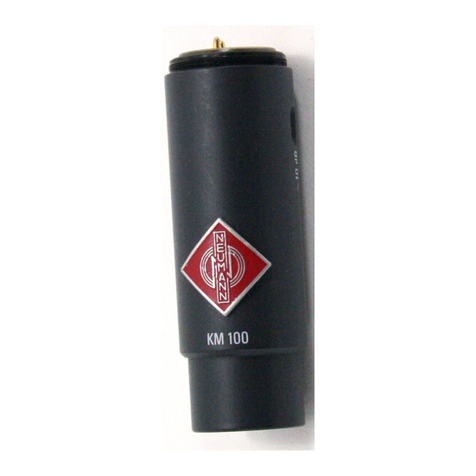
Neumann
Neumann KM 100 F Specifications
